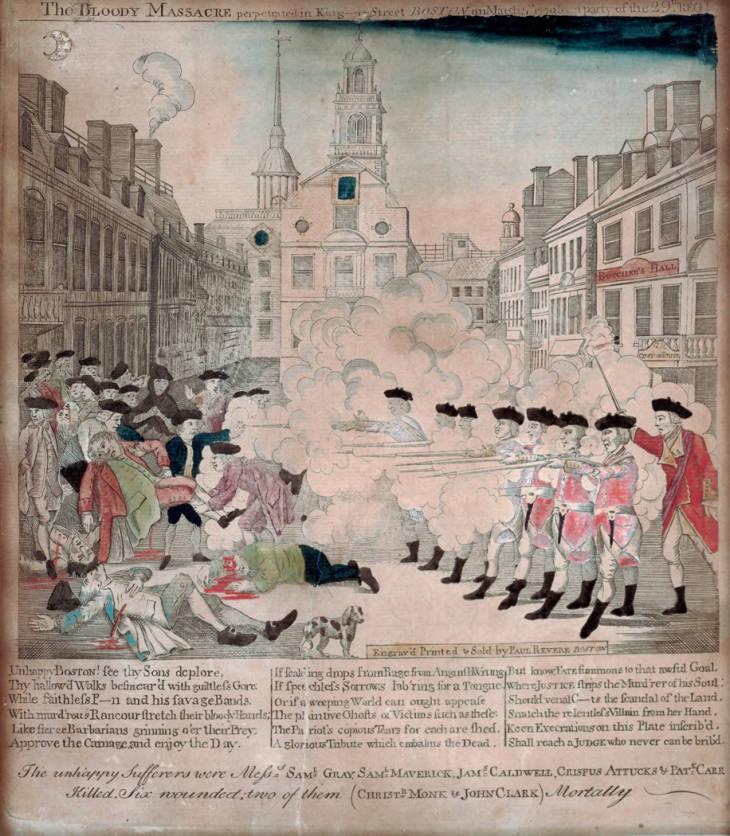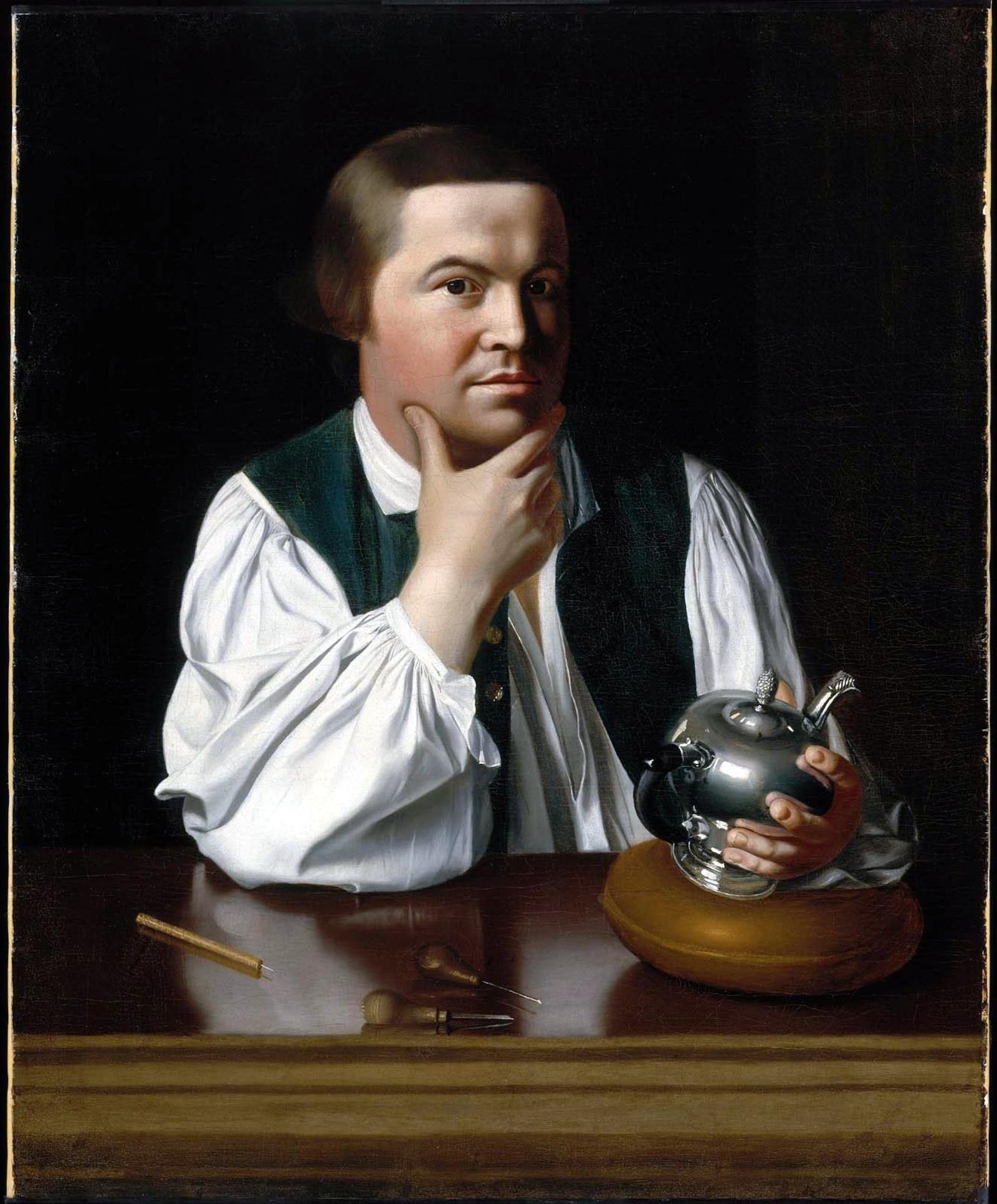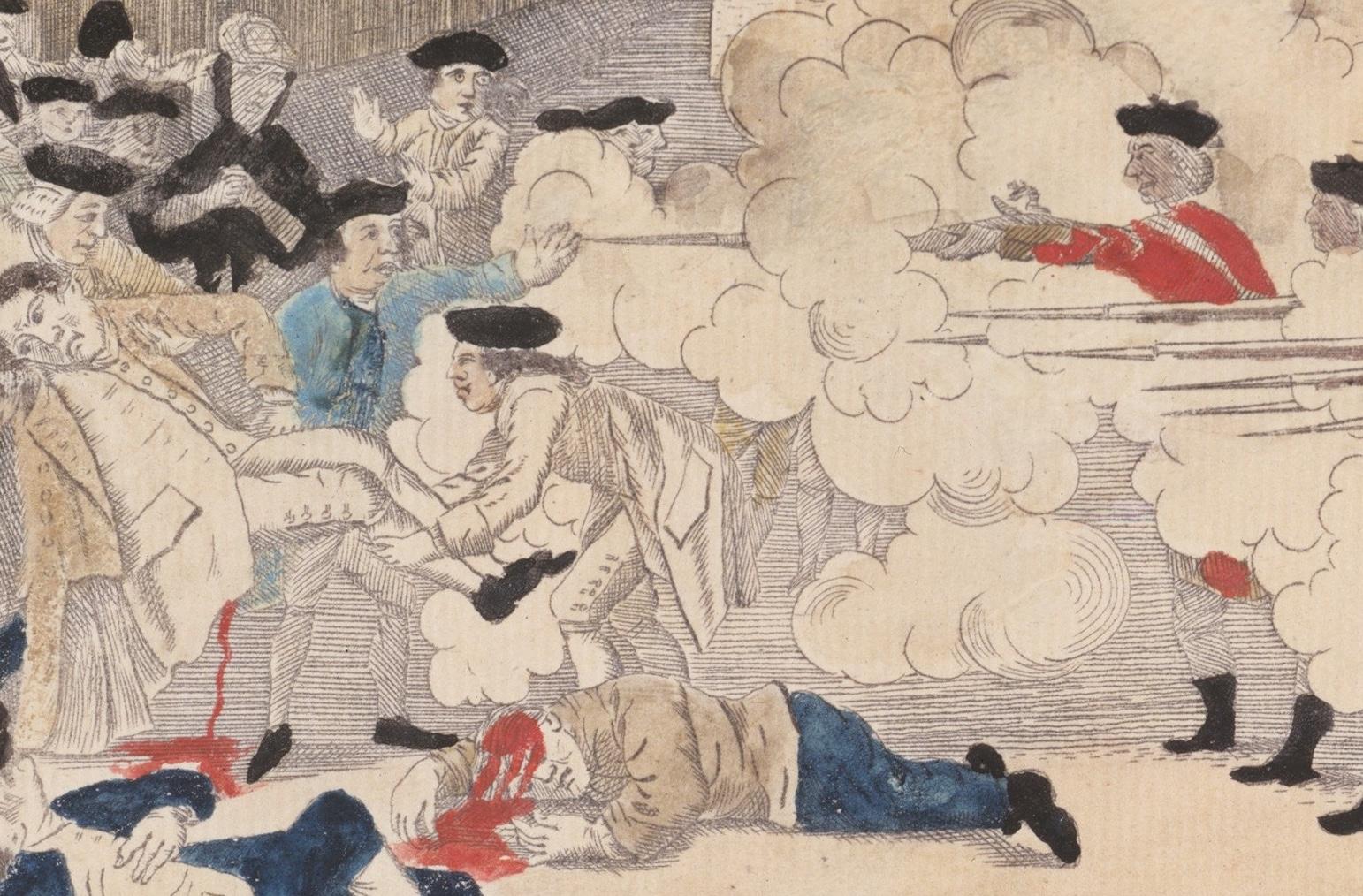The conflict began when fifty Bostonians protested the large presence of British soldiers protecting enforcers of recently increased taxes on the colonists. The situation grew violent and eight protestors were wounded by gunfire while five others died.
In the Athenaeum's special collection department, the work’s fragile paper and discolored pigments are sheltered from light and heat. Yet as the condition of the work has deteriorated over 250 years, our understanding of the violent events it portrays have changed and improved.
This should "prompt us to ask questions about how historical narratives are constructed, written, and rewritten," the Athenaeum’s assistant curator, Virginia Badgett, tells Art & Object. "History is not static, but revised and repurposed over time," she adds.
Revere’s engraving is, of course, an artwork, and he meant it to serve as political art to grow sympathy for the Revolution.
Consequently, Massacre, contains purposeful inaccuracies both relatively innocuous and significantly problematic.




























